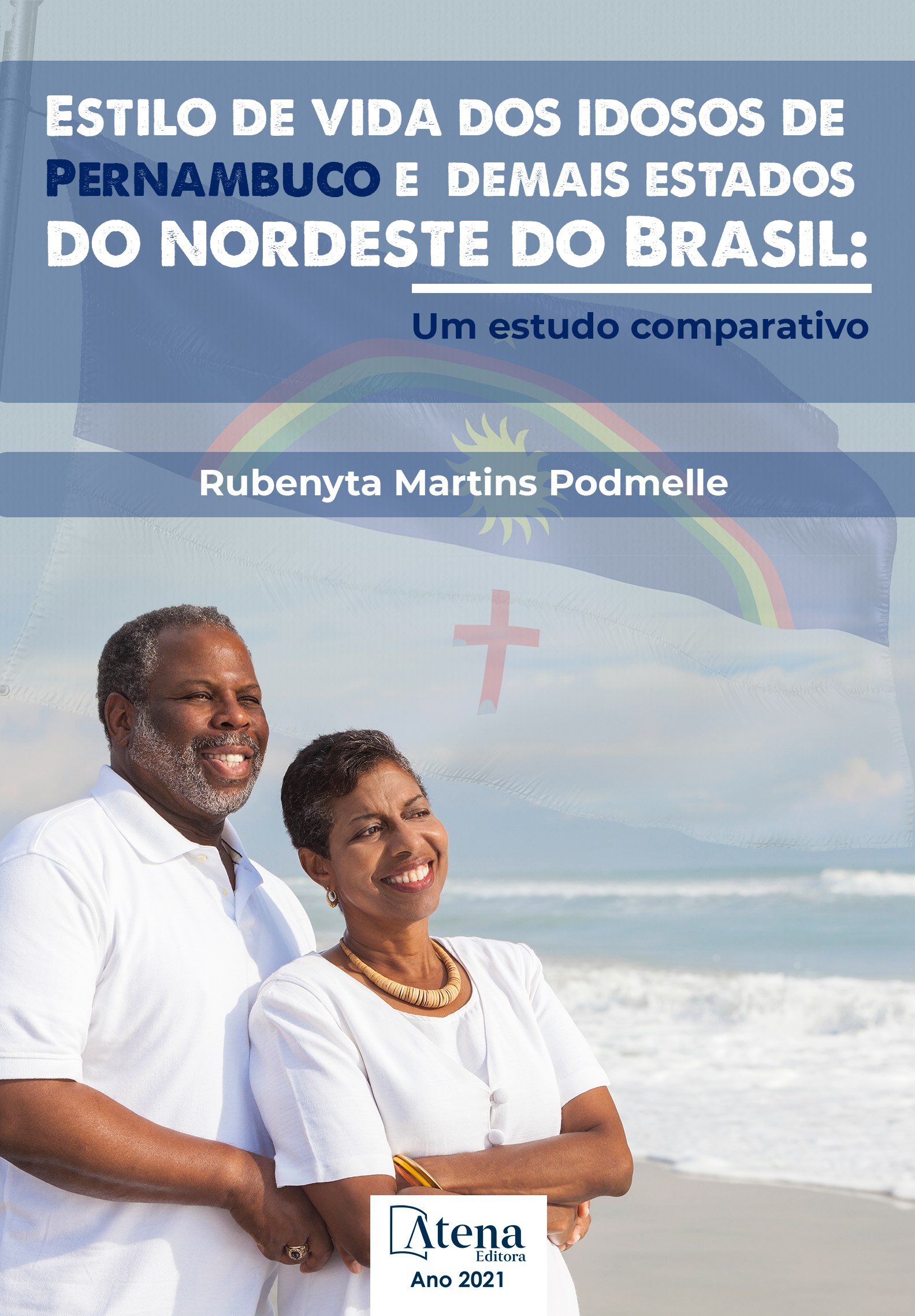
Estilo de vida dos idosos de Pernambuco e demais estados do nordeste do Brasil: Um estudo comparativo
Publicado em 12 de janeiro de 2022.
Objective: To analyze the lifestyle in a comparative perspective between the elderly of Pernambuco and another states of the Northeast region. Method: This is an analytical, descriptive and cross-sectional study, based on secondary lifestyle data from the National Health Survey of 2013. The sample consisted of data from elderly people in the Northeast who answered the selected questions about socioeconomic variables, health conditions and lifestyle. The categories of questions were: food consumption (frequency of consumption of fruits and vegetables, beans and fish), Physical activity (at least 150 minutes per week), alcohol use (consumption of four or more doses on a single occasion in the last 30 days) and smoking (percentage of smokers). The analysis was developed in three stages: Verification of data normality, descriptive statistics for the determination of absolute and relative frequencies of the variables and characterization of the sample of elderly people in Pernambuco, and a bivariate analytical statistical analysis comparing the lifestyle of the elderly people of Pernambuco according to socioeconomic variables and health conditions, as well as comparing the lifestyle of elderly people from Pernambuco and the elderly in the other states of the Northeast, using the Chi-square test or Fisher's exact test. Results: According to national and international recommendations, 62% of the elderly in Pernambuco eat beans, 79.3% eat fish and 0% eat fruits and vegetables properly, as well as 53.9% practice physical activity in leisure, 45% in transfers and 34.4% in usual activities. Also, 67.1% do not consume alcohol excessively and 82.7% do not smoke tobacco. In relation to bean consumption, it was associated with the variables gender (p = 0.000), schooling (p = 0.000), health insurance (p = 0.000) and health insurance cost (p = 0.001). Fruit consumption was associated with schooling (p = 0.000) and health insurance (p = 0.001), while consumption of vegetables or cooked vegetables was only associated with schooling (p = 0.03). The consumption of fish and salad was not associated. Regarding physical activity, only the weekly frequency during leisure time was associated with gender (p = 0.02) and marital status (p = 0.04). Regarding physical activity, only the weekly frequency during leisure time was associated with gender (p = 0.02) and marital status (p = 0.04). Excessive alcohol use was associated with the skin color/race of the elderly (p = 0.03) and smoking was associated with gender (p = 0.000), skin color/race (p = 0.03), marital status (p = 0.006), health insurance (p = 0.000) and presence of a chronic noncommunicable diseases (p = 0.02). Final Considerations: The elderly of Pernambuco present regular food consumption, physical activity and excessive use of alcohol at reasonable levels and smoking in a satisfactory situation. Those males, white and married showed a relatively better lifestyle. Comparing Pernambuco to the other states of the Northeast, it can be seen that their prevalence is almost always below the neighboring states, strengthening the importance of strategies directed to the elderly that allow the adoption of a healthy lifestyle. Among the Northeastern states, there were a significant difference in relation to all food consumption categories (p = 0.000) and to smoking (p = 0.02). There were no statistically significant differences (p> 0.05) in relation to excessive alcohol use or variables related to physical activity.
Estilo de vida dos idosos de Pernambuco e demais estados do nordeste do Brasil: Um estudo comparativo
-
DOI: 10.22533/at.ed.038221101
-
ISBN: 978-65-5983-703-8
-
Palavras-chave: 1. Envelhecimento. 2. Estilo de Vida. 3. Nível de Saúde. I. Podmelle, Rubenyta Martins. II. Título.
-
Ano: 2022


